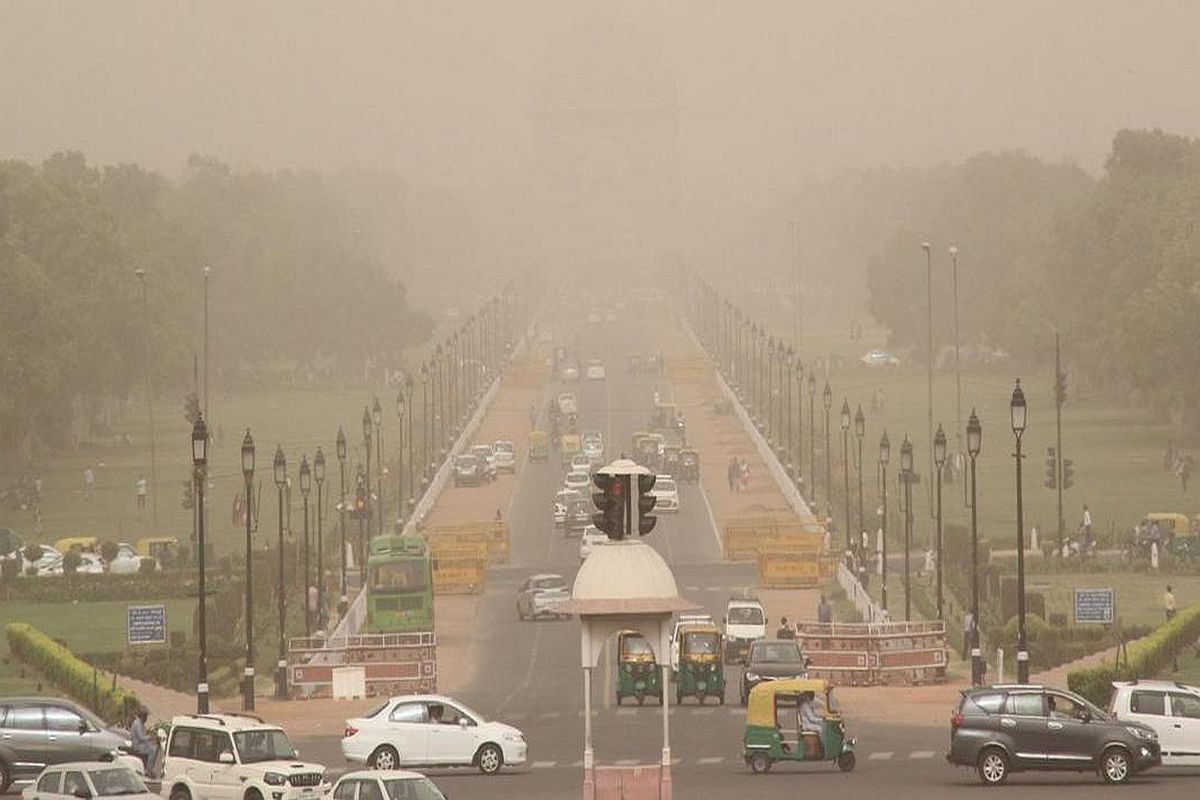Land deals in Delhi-NCR rise to 29 in FY24, Gurgaon emerges as prime location
A report by ANAROCK, a leading real estate consultancy, said these deals encompass approximately 314 acres, compared to 23 deals covering 273.9 acres in FY23.
In order to address the issue of stubble burning, which has been cited as a major cause of air pollution in Delhi, the Pusa Institute has been involved to come up with a solution that could be sprayed onto the stubble, turning the mass into organic fertilizer which will possibly discourage the farmers from burning their crops

Delhi air pollution (File Photo: IANS)
The citizens of Delhi-NCR savoured a rare view of clear blue skies during the lockdown implemented by the Government of India in the wake of Covid-19 pandemic. Reduced traffic flow led to a fall in vehicular emissions. As we await the reopening of the economy, we also await the return of capital’s pollution woes. Blue skies will once again be shrouded in thick, toxic smog. But the crisis may exacerbate this winter. With the Covid-19 pandemic still going strong, Delhi will have to tackle its perennial problem of pollution and smog through a multi-pronged approach.
On October 5, Delhi Chief Minister Arvind Kejriwal announced a “Yuddh Pradushan Ke Virudh” (war against pollution) campaign, under which the government has come up with customized plans of action for each of the 13 pollution hotspots in the city. Another important development has been the concentration on citizen engagement in relation to environmental pollution. The CM announced the rolling out of a Green Delhi app which can be used by citizens to upload photos of environmental pollution being caused in their vicinity and lodge complaints against people suspected of polluting.
In order to prevent tree felling due to development work, the government has come up with a tree transplantation policy, which requires at least 80 per cent of trees removed for any development project within Delhi to be transplanted to another region i.e., the trees will be uprooted and then planted again. This is aimed at addressing the issue of compensatory plantation of 10 saplings against cutting of 1 tree, which might be hundreds of years old. “The agency concerned will have to ensure that 80 per cent of the total transplanted trees survive. Payments for transplantation will be made after one year to ensure this, and if less than 80 per cent of the transplanted trees survive, payment will be deducted” the Delhi CM said while addressing an online press conference on October 9.
Advertisement
Additionally, the Delhi Government announced setting up of a smog tower in Connaught Place within ten months, for which it has sanctioned Rs 20 crore. In order to address the issue of stubble burning, which has been cited as a major cause of air pollution in Delhi, the Pusa Institute has been involved to come up with a solution that could be sprayed onto the stubble, turning the mass into organic fertilizer which will possibly discourage the farmers from burning their crops.
The new electric vehicle policy of the Government of Delhi, whereby positive incentives have been made available to denizens to switch over to electric vehicles both in the short and the long term, has also been a welcome change. The policy also seeks to incentivize the switch to EVs through waiving road tax and registration charges for such vehicles, and incorporating a scrapping incentive for use of old parts of vehicles – which may especially be useful to nudge the populace towards an electric vehicle-based future.
This antipollution campaign is not the capital’s first step towards combating pollution. From the odd-even rule to abandonment of vehicles older than 10 to 15 years, all have been measures to control what was once called a gas chamber like situation by the CM of Delhi.
The pollution of Delhi has become a political issue with Governments often indulging in mudslinging. The stubble burning, vehicular pollution, industrial activity, non-execution of the orders of various courts, suffocating air quality both in relation to PM 2.5 and PM 10, have been issues that the citizens of Delhi NCR face every year. Pollutants from firecrackers linked to festivities around this time also worsen the already dismal air of the region.
Air pollution affects our lungs insidiously. Studies have suggested that high levels of air pollution can compromise the resistance of people and make them more susceptible to the deadly coronavirus. High pollution coupled with freezing cold spell of the capital will make it more likely for people to contract respiratory diseases. Co-morbid health conditions pose a great challenge for the already stressed healthcare facilities in the capital. Thus, the policies conceived by the government, now acquire a different dimension of potency.
The Covid-19 crisis has irrevocably changed the world. It has forced us to reorient, and rethink our relationship with the environment. With its creative and strategic thinking, Delhi government’s policies have taken cognizance of the looming health crisis. While the efficacy of the actual implementation of such policies is still to be tested over the winter, the government of Delhi must be commended for taking strides in the right direction. With proper infrastructure, engagement and implementation, the air in the NCR, perhaps, could be made breathable in the time to come.
The current reduction in pollution is a result of the lockdown imposed in the country, but that has come at an enormous economic cost. As we continue to fight coronavirus from the confines of our homes, let’s hope to see clearer skies without paying a steep price!
The writers are, respectively, FounderDirector of Envipol and Assistant Dean at the Jindal School of Environment and Sustainability and a journalist working as a research fellow at EnviPol.
Advertisement